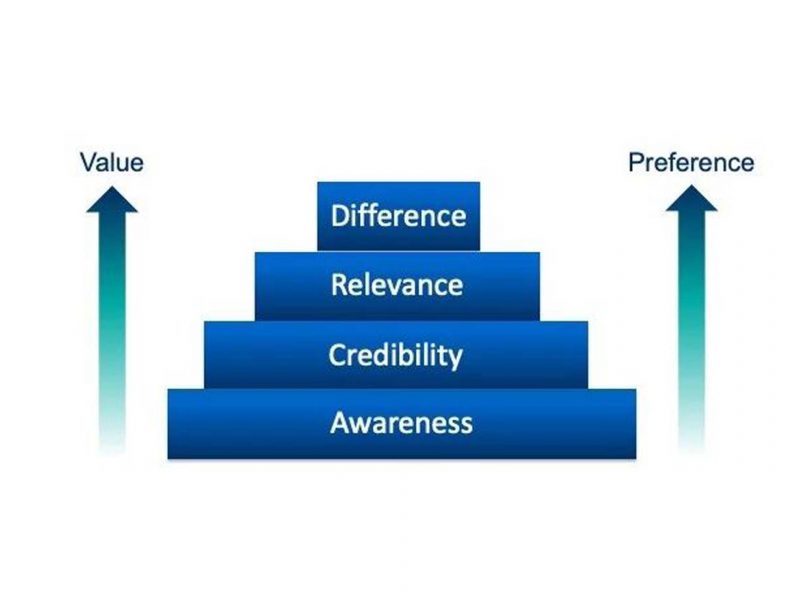Building blocks

The brand is the organizing principle that defines and informs our marketing effort. The strength of the Northern Arizona University brand provides an institutional “halo effect” that enhances our ability to market and promote our individual programs, colleges, and majors. It is essential that the university pay attention to all four building blocks that represent the creation of a strong brand.
Building block definitions
Awareness
This is foundational, since getting a prospect to put NAU into their consideration set is based on their having a baseline knowledge of what NAU is, what it offers, and how it delivers its offer. Awareness is largely built through mass media, and in our case much of this is outside of the home and throughout the state of Arizona (including highway billboards, train wraps, transit posters, interior signage at airports, and radio advertisements).
Credibility
Having a credible offer is key to moving up the brand “food chain” toward differentiation, and this happens through:
- third-party rankings of the university and its programs
- earned media coverage that showcases faculty scholarship, artistry, and research
- earned media coverage that highlights faculty “thought leadership” on key issues that are part of the cultural zeitgeist (e.g., what people are talking about in the public square) and where the university has particular expertise (e.g., climate change, sustainability, public health, astronomy, forestry, etc.).
Relevance
This is meant to answer a variety of questions: “Does the university have the courses and programs I’m looking for? Does it deliver these programs and courses in a way that is relevant to my lifestyle and where I am in my life, including where and how I’d like to learn? Will the university care about me as a person? Will it prepare me for success in my post-collegiate life?” These are some of the questions that we must answer to communicate relevance to a target audience.
Difference
Once relevance is established, differentiation puts us over the top. To accomplish this, we must answer the following questions: “What’s the NAU experience like and how is it different than at other universities? What can I get at NAU that I can’t get anywhere else? Does NAU have specific programs I can’t find somewhere else, or are they better or different than programs found elsewhere? Are there better outcomes from an NAU experience and degree? Will I get more support from faculty and staff in achieving my goals?”
Developing a distinctive brand position is based on research of key audiences: to determine current perceptions on a variety of dimensions, to assess potential areas of distinction, as well as our “permission” to claim these areas as our own.
The further up the brand food chain you go, the more precise the messaging and specific communication channels become. As a result, most of our communications for marketing specific programs fall into the “relevance” and “differentiation” categories, leaving our institutional brand efforts to provide “air cover” that help support our program marketing efforts.
Building a campaign

We added market research and branding strategy to these building blocks to craft an authentic, engaging brand campaign.
Explore our process for building a campaign.

